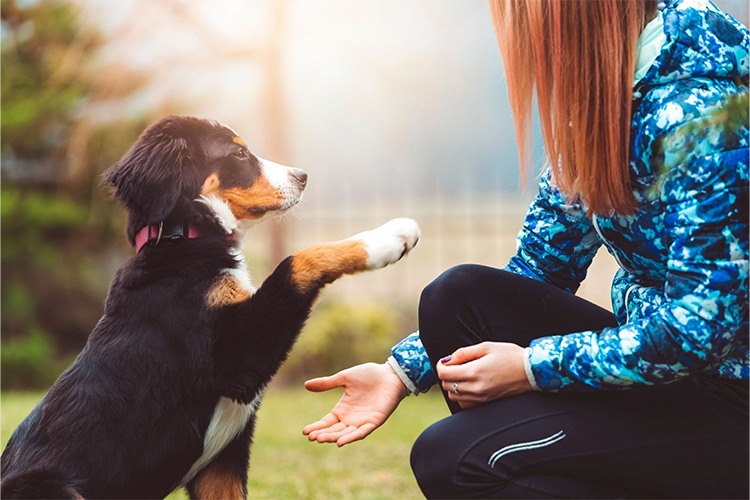Essential Tips for Successful Dog Training: An Overview for Animal Owners
Effective dog training is a diverse procedure that requires a calculated method customized to both the animal's personality and the proprietor's purposes. Key components such as establishing regular commands, using favorable reinforcement, and assisting in very early socialization play important roles in fostering a well-adjusted canine friend. Nonetheless, several animal proprietors experience obstacles that can prevent progress, leading to irritation and unpredictability. Understanding exactly how to navigate these obstacles can considerably enhance the training experience, eventually changing the relationship between owner and dog. What are the important strategies that can be employed to make sure success in this undertaking?
Recognizing Dog Habits
Recognizing canine actions is crucial for effective training and cultivating a harmonious connection in between dogs and their owners. Pet dogs connect mostly with body language, articulations, and actions, making it crucial for owners to analyze these signals accurately. Recognizing a pet dog's stance, tail setting, and ear positioning can give insights into its emotion. A wagging tail does not always indicate happiness; it can also indicate excitement or anxiousness.

Socialization plays a substantial role in pet habits; direct exposure to different atmospheres, individuals, and other pets can considerably impact a dog's personality. Furthermore, aspects such as type attributes and private personality ought to assist training techniques, as some types might have particular behavior attributes that require tailored strategies. By recognizing these components, proprietors can create a helpful environment that urges favorable habits, resulting in effective training results and a much deeper bond with their animals.
Developing Regular Commands
Reliable communication with your pet dog starts with establishing regular commands. This fundamental component of training is crucial for cultivating understanding between you and your animal. Uniformity in the commands you utilize guarantees that your dog can reliably associate specific words or phrases with the wanted habits.
When picking commands, pick clear, unique words that are easy to set apart and say from each other. Stay clear of making use of similar-sounding commands that may perplex your pet. Making use of "rest" and "remain" is appropriate, however "sit" and "struck" can lead to misunderstandings.
In addition, keep the very same tone and volume for each and every command. Pets are delicate to singing cues, so varying your tone can produce confusion.
It is similarly vital to guarantee that all member of the family are on the very same web page concerning the commands used. A united front in command use will certainly prevent blended signals and reinforce the understanding process.
Favorable Support Techniques
The power of favorable reinforcement in dog training depends on its capacity to motivate preferred actions via incentives and appreciation. This method is based in the principle that behaviors followed by beneficial end results are more most likely to be repeated. By including positive support into your training regimen, you can efficiently shape your dog's actions in a constructive fashion.
To apply positive reinforcement, it's important to determine what encourages your dog, whether it be deals with, toys, or spoken appreciation. When your dog performs a preferred action, such as resting on command, promptly award them with a reward or love. This organization in between the command and the positive result reinforces their understanding.
It's vital to timing the incentives appropriately; delivering the reinforcement within seconds of the preferred habits assists your canine make the link (dog training). In addition, uniformity is key-- guarantee that all member of the family use the exact same commands and reward systems to prevent confusion

Progressively, you can reduce the regularity of treats as your canine finds out the actions, transitioning to praise or intermittent rewards. This approach not just fosters a solid bond in between you and your dog but likewise advertises a favorable discovering atmosphere, making training a pleasurable experience for both.
Socialization and Interaction
Constantly subjecting your dog to a variety of atmospheres, people, and other animals is critical for their social development. Socialization ought to begin early, ideally during the crucial home window of 3 to 14 weeks, when pups are most responsive to new experiences. However, older dogs can additionally gain from recurring socializing efforts.
Present your pet to various settings, such as parks, pet-friendly stores, and urban areas. This exposure helps them adapt to different stimulations, lowering stress and anxiety and concern actions. Urge favorable interactions with other canines and individuals, guaranteeing that these encounters are risk-free and controlled to cultivate confidence.
Make use of structured playdates with genteel canines, as this can improve your pet dog's social skills and teach them suitable actions. Obedience courses and training sessions also provide excellent opportunities for socialization, permitting your pet dog to communicate with others in a monitored atmosphere.
Monitor your pet dog's body movement during interactions, as this will certainly aid you determine their convenience degree. Progressively boost exposure to even more tough circumstances while making sure that each experience declares. A well-socialized dog is a lot more most likely to exhibit balanced actions, making them a happiness to have in any setting.
Resolving Usual Training Difficulties
Every pet dog proprietor will run into training obstacles at some time, no matter of their canine's age or socialization level. Recognizing typical problems such as stubbornness, interruptions, and terror can help in developing effective techniques for renovation.

Interruptions throughout training sessions can thwart focus. To fight this, begin training in a quiet environment with very little stimuli. Slowly introduce diversions as the pet dog ends up being a lot more skillful in commands. Short, constant training sessions are additionally reliable in keeping interest.
Fearfulness can hinder a dog's learning procedure. Steady desensitization to the resource of worry, matched with positive support, can assist minimize stress and anxiety. Patience is crucial; never ever require a canine into a scenario that triggers distress, as this may intensify the issue.
Inevitably, understanding and attending to these typical challenges with a structured strategy will certainly cultivate an extra effective training experience, enhancing the bond between canine and owner while advertising efficient knowing.
Verdict
In summary, effective pet dog training counts on a comprehensive understanding of canine habits, the establishment of constant commands, and the application of positive reinforcement strategies. Socialization plays an essential duty in developing well-adjusted pet dogs, while dealing with usual training challenges needs patience and versatility. By implementing these necessary techniques, pet dog owners site link can promote a solid bond with their canines and advertise desirable habits, inevitably leading to a harmonious partnership between people and their canine friends.
Understanding pet behavior is crucial for efficient training and cultivating a harmonious partnership in between canines and their owners.Socializing plays a significant function in pet dog actions; exposure to different settings, people, and other pets can substantially impact a canine's personality.The power of positive reinforcement in canine training lies in its ability to motivate preferred habits via incentives and appreciation. By including favorable support into your training regimen, you can efficiently shape your pet dog's habits in a useful way.
In recap, effective pet dog training depends on a detailed understanding discover this info here of canine actions, the facility of constant commands, and the application of favorable support methods.